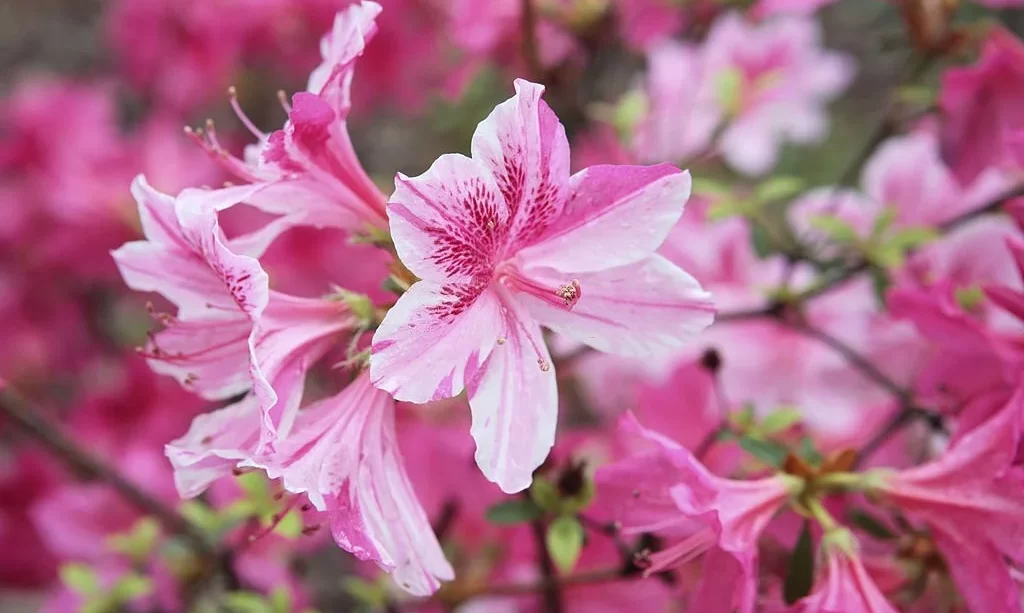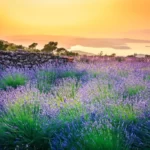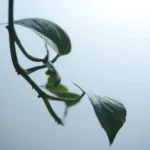Azaleas, with their captivating and diverse blooms, are cherished additions to gardens and landscapes. Curiosity about the colors of azalea flowers often arises, and you’re about to uncover a delightful spectrum of hues. This guide simplifies the exploration of azalea colors, offering a glimpse into the vibrant palette that adorns these charming shrubs.
- Vibrant pink neon flowers with green foliage
- USDA zones 6-10
- Plant in sun to part shade
- Blooms in spring, summer, and fall
- Water twice per week until established, then water once per week
Diverse Azalea Colors
Azalea flowers exhibit a rich and varied array of colors, each contributing to their enchanting beauty:
- Shades of Pink: Among the most common hues, pink azaleas come in an assortment of tones, from delicate pastels to deep and alluring magentas. Pink symbolizes grace and femininity, and pink azaleas bring a touch of elegance to gardens.
- Radiant Reds: Red azaleas make a bold statement with their passionate and fiery shades. These blossoms evoke feelings of energy and ardor, standing out amidst the greenery.
- Lovely Lavenders: Lavender-hued azaleas offer a soothing presence with their calming and serene tones. These blossoms create an atmosphere of tranquility in any outdoor space.
- Pure Whites: White azaleas convey purity and innocence. Their pristine appearance brightens up gardens and brings a touch of elegance and simplicity.
- Sunny Yellows: Yellow azaleas exude the warmth of sunshine. They symbolize joy and optimism, infusing gardens with a cheerful and uplifting ambiance.
- Orange and Coral Tones: Azaleas in shades of orange and coral introduce a burst of vibrancy to landscapes. These blooms radiate warmth and create a welcoming atmosphere.
- Semi double red-orange flowers with green foliage
- Plant in sun to part shade; water daily until established
- Blooms spring, summer, and fall; USDA zones 6-10
- Expected Blooming Period: Spring To Fall
- Sunlight Exposure: Partial Shade
Varietal Differences
Azalea colors can also be influenced by the specific variety or type of azalea:
- Evergreen Azaleas: These varieties often showcase a range of colors, including shades of pink, red, and white. Their glossy green foliage serves as a striking backdrop, enhancing the visual impact of the blossoms.
- Deciduous Azaleas: Deciduous azalea varieties offer an even broader spectrum of colors. Alongside the classic hues, they introduce shades of yellow, orange, and coral. The deciduous nature of these azaleas adds another layer of interest to gardens, as their colorful blooms are complemented by the changing leaves.
- Hardiness zone.3-7
- Grow.Scatter or sprinkle the seed on to the surface of the pot and perhaps gently stir the surface with a nail. Do not bury the seed under the soil as surface germination is entirely natural in the wild.
- Soil.Azaleas prefer soil that’s on the acidic side of the pH scale (pH of 4.5 to 6.0).
- Use.They provide both striking beauty when they are in bloom as well as a very reliable evergreen backdrop.
- Self-seeding.Grow from seed and enjoy growing with your family.
Conclusion
Exploring the kaleidoscope of azalea colors reveals a world of enchantment that adds depth and character to outdoor spaces. From the soft pastels to the vibrant reds and radiant yellows, each azalea hue has its own story to tell. The varietal differences provide further nuances, ensuring that every encounter with an azalea is a unique and captivating experience. As you observe these blossoms in gardens, parks, and landscapes, you’ll carry with you the understanding that the beauty of nature’s palette is as diverse as it is captivating.







